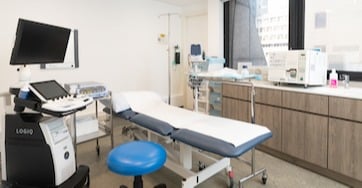The Centre for Health Protection (CHP) reported that cervical cancer is the seventh most common cancer among females in Hong Kong and accounted for 3.2% of all new cancer cases in females in 2020. In 2021, 178 women died from this cancer, accounting for 2.8% of female cancer deaths.⁷
This blog covers the frequently asked questions about one of the most common causes of cervical cancer, Human Papillomavirus (HPV), the significance of HPV vaccines among children and what to consider when getting the HPV vaccine in Hong Kong.
What is HPV?
Human Papillomavirus, or HPV, is the most prevalent sexually transmitted infection globally. There are over 100 types of HPV, with about 40 of them affecting the genital area and at least 14 can cause cancer. HPV 16 and 18 are responsible for about 70% of cervical cancers.1 Although most infections with HPV resolve spontaneously and cause no symptoms, persistent infection can lead to cancer.
What is the link between HPV and cervical cancer?
Cervical cancer is caused by sexually acquired infection with certain types of HPV.⁸ HPV infection accounts for many cervical and vaginal cancers among women and oropharyngeal and anal cancers among both men and women. In 2018, cervical cancer was the fourth most common cancer among women globally. With an estimated 570,000 new cases, about 311,000 women died from the disease.1 The peak incidence rate of cervical cancer between 2015 and 2017 in the UK was among the 30–34 age group.2
How to prevent cervical cancer?
Effective and primary prevention is HPV vaccination. Secondary prevention is population-based screening and treatment of precancerous lesions, which can prevent most cases of cervical cancer. To learn more about regular cervical screenings at OT&P, visit our blog here.
What is the HPV vaccine?
HPV vaccines do not contain any live biological material or viral DNA. Which means they do not cause infection with the virus and cannot cause cancer. The vaccines use recombinant technology that recreates some proteins outside the virus. By resembling the virus, the vaccine stimulates the immune system to produce protective antibodies against HPV infection.
Who is the vaccine for, and when can it be given in Hong Kong?
The HPV vaccine is recommended for girls and boys at 11 or 12, although it can be given as early as 9. The vaccine has already been a part of the NHS vaccination programme in the United Kingdom for girls and boys age 12–13. In contrast, girls are eligible in Hong Kong from age 9. This means they can access Primary 5 and 6 under the Hong Kong Childhood Immunisation Programme. OT&P covers the child vaccination schedule in Hong Kong here. HPV vaccination is also recommended for everyone aged 26 years, if not vaccinated already. Visit our blog here to learn more about adult vaccination in Hong Kong.
Why should my child get the HPV vaccine in Hong Kong?
HPV vaccination is a vital cancer prevention tool for both boys and girls. Vaccination can help protect your son from the most common types of HPV, and can help reduce his risk of developing cancer later in life. HPV vaccination is safe, effective, and has few side effects. It is important to vaccinate your son at age 11 or 12, before he becomes sexually active.
There are many reasons to consider HPV vaccination for your son in Hong Kong. First, HPV is a very common virus, and vaccination can help protect against the most common types of HPV. Second, HPV vaccination can help protect against cancer-causing HPV types. Third, HPV vaccination is safe, effective, and has few side effects. Finally, HPV vaccination is recommended for boys and girls aged 11 or 12.
Is the vaccine safe? Does the HPV vaccine have a side effect?
Most side effects are mild, such as fever or muscle pain, and usually last for a day or two. As with any vaccination or medicine, unexpected reactions may occur, but no serious harm has been found. In such a scenario, we recommend seeing your doctor immediately.
Which HPV Vaccines are available in Hong Kong
In 2006, the FDA approved the first HPV vaccine, Cervarix, as a preventative measure against two HPV strains (16, 18). These strains are known to cause around 70% of cervical cancer cases worldwide, and two are common causes of genital warts. Since then, the Gardasil 9 vaccine, which protects against even more HPV strains, has been developed and approved by the FDA.
- Prevent the four most prevalent high-risk and
- carcinogenic HPV types (HPV 16, 18, 52, 58)
in Hong Kong * - Prevent high-risk HPV types 16, 18, 31, 33, 45, 52, 58 (causing a total of 90% of cervical cancer),
- Reduce 90-95% of the risk for anal cancer
- Reduce 90% of the risk for genital warts
Which is better, Gardasil or Cervarix?
There is no simple answer to whether Gardasil or Cervarix is better. Both are highly effective at preventing cervical cancer, and which is best for an individual may depend on several factors. However, Gardasil 9 does cover more strains. In fact, the newest vaccine has been estimated to protect against approximately 90% of all cervical cancer cases and can be available in Hong Kong to boys and girls over the age of 9. In Hong Kong, vaccination should be considered based on the child’s individual needs but in most cases, it will be highly advised. It is best to seek advice from a paediatrician if you are uncertain.
Gardasil 9, or Gardacil 9i-in-1 HPV vaccination prevents the four most common high-risk and cancer-causing HPV types in Hong Kong (16, 18, 52, 58). It also prevents against HPV types 16, 18, 31, 33, 45, 52, 58. The combination accounts for the 90% mentioned previously.
How effective are these vaccines?
The HPV vaccine is very effective and safe with no significant side effects. The vaccine provides nearly 100% protection against persistent cervical infections with HPV types 16 and 18 (cancer-causing) and the cervical cell changes these infections can cause.3 It also demonstrates nearly 100% effectiveness in preventing cervical, vulvar and vaginal diseases caused by those targeted HPV strains. A study published in Paediatrics in 2019 found that not only did the vaccine protect against the HPV strains for women aged 13–26, but they were also less likely to be infected by other strains which will compound the reduction in cervical (pre)cancer incidence.4
In other words, the vaccine showed cross-protection against other HPV strains not covered by the vaccine. Additionally, it was found that women who did not get the vaccine became less likely to be infected with HPV, also known as herd immunity.
How long does the protection last?
To date, protection against the targeted HPV strains has been found to last at least ten years, but experts believe it could provide lifelong protection. Long-term vaccine efficacy studies are still in progress to better understand the total duration of protection.
Why do my children need the vaccine at such a young age?
Despite all the positive results from clinical studies, the vaccine uptake rate is still suboptimal in the US and some EU countries.5 Even though the vaccine can be given as early as 9 years old; some families may hesitate to consider vaccinating their young children against sexually transmitted infections. On the contrary, the vaccine works best if the vaccination course is completed well before they start having sexual exposure. Parents may even find it easier to get their preteen children vaccinated and complete the vaccine series, rather than waiting until they get older. The immune system is also more robust at younger ages, only two doses of the vaccine are required compared to three doses for age 15 and above. Doing it early before being exposed to HPV ensures protection for all targeted HPV types.
Parents concerned that vaccinating their children means permitting them to have sex should not worry, as studies have found otherwise. A 2018 study conducted in Canada found no evidence that teenage girls took more sexual risks after the school launched the HPV vaccination program.6 Also, their sexual health choices improved with more girls in the study saying they would use condoms or birth control pills.
HPV vaccination is about the prevention of cancers. It is a safe, effective vaccine that all parents should feel at ease with when deciding to vaccinate their children.
What can OT&P do?
At OT&P Healthcare, we are firm believers in preventive medicine. Our dedicated team of healthcare professionals can offer you and your child a safe and child-friendly environment to get vaccinated. Our family medicine and paediatric doctors are knowledgeable to answer any questions.
Book an appointment or call our registration desk to find out more.
References
1. (2020). ’Global strategy to accelerate the elimination of cervical cancer as a public health problem’. World Health Organization. 17 November. Available at: <https://www.who.int/publications/i/item/9789240014107>
2. ’Cervical Cancer Incidence Statistics’. Cancer Research UK. Available at: <https://www.cancerresearchuk.org/health-professional/cancer-statistics/statistics-by-cancer-type/cervical-cancer/incidence>
3. Joura EA, Giuliano AR, Iversen OE, Bouchard C, Mao C, Mehlsen J, Moreira ED Jr, Ngan Y, Petersen LK, Lazcano-Ponce E, Pitisuttithum P, Restrepo JA, Stuart G, Woelber L, Yang YC, Cuzick J, Garland SM, Huh W, Kjaer SK, Bautista OM, Chan IS, Chen J, Gesser R, Moeller E, Ritter M, Vuocolo S, Luxembourg A; Broad Spectrum HPV Vaccine Study. A 9-valent HPV vaccine against infection and intraepithelial neoplasia in women. N Engl J Med. 2015 Feb 19;372(8): 711–23.
4. Spinner C, Ding L, Bernstein DI, Brown DR, Franco EL, Covert C, Kahn JA. Human Papillomavirus Vaccine Effectiveness and Herd Protection in Young Women. Pediatrics. 2019 Feb; 143(2): e20181902. doi: 10.1542/peds.2018-1902. Epub 2019 Jan 22.
5. Karafillakis E, Simas C, Jarrett C, Verger P, Peretti-Watel P, Dib F, De Angelis S, Takacs J, Ali KA, Pastore Celentano L, Larson H. HPV vaccination in a context of public mistrust and uncertainty: a systematic literature review of determinants of HPV vaccine hesitancy in Europe. Hum Vaccin Immunother. 2019; 15(7-8): 1615–1627.
6. Ogilvie GS, Phan F, Pedersen HN, Dobson SR, Naus M, Saewyc EM. Population-level sexual behaviours in adolescent girls before and after introduction of the human papillomavirus vaccine (2003-2013). CMAJ. 2018 Oct 15;190(41): E1221–E1226.
7. (2020). ‘Cervical Cancer’. Centre for Health Protection (CHP). 20 May. Available at: <https://www.chp.gov.hk/en/healthtopics/content/25/56.html>
8. (2020). ’Human papillomavirus (HPV) and cervical cancer’. World Health Organisation.11 November. Available at: <https://www.who.int/news-room/fact-sheets/detail/human-papillomavirus-(hpv)-and-cervical-cancer#:~:text=Cervical%20cancer%20is%20caused%20by,%2C%20vagina%2C%20penis%20and%20oropharynx>

 Central General Practice
Central General Practice
 Repulse Bay
Repulse Bay
 Clearwater Bay
Clearwater Bay
 BodyWorX Clinic
BodyWorX Clinic
 Central Specialist Clinic
Central Specialist Clinic
 MindWorX Clinic
MindWorX Clinic
 Partner Clinics
Partner Clinics
 Family Clinic
Family Clinic
 OT&P Annerley Midwives Clinic
OT&P Annerley Midwives Clinic


